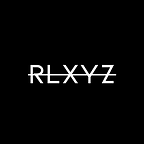This is Part 1 of our series on the On-Chain Generative Art & NFT Photography to help provide a framework for understanding how we can push innovation in both genres of art.
Before we can begin exploring the why of blockchain art, we have to take a step back to understand the current art market.
The traditional art market has a few major problems…
#1 Fakes & forgeries
It is estimated that up to half of the international art market are forgeries and fakes and that even the most sophisticated buyers can be duped.
Simply put, the main reason for this is because there has never been an accepted global standard for recording information in the art industry which means that the key information is only sporadically recorded. Some of the key information in this context is:
- the artist name
- the date it was created
- who has owned it in the past (and for how long)
- the prices that were paid for it, and
- who owns it today or where it is displayed
This is what is known in the art world as the provenance of a piece of art:
Provenance — a record of ownership of a work of art or an antique, used as a guide to authenticity or quality.
#2 Unreliable external dependencies
As a consequence of the lack of provenance, collectors have had to rely on the opinion of ‘experts’ (what we in the blockchain world describe as ‘external dependencies’) to prove authenticity and value.
The unfortunate thing about external dependencies (ie. people) is that they are corruptible and prone to error which can lead to enormous discrepancies in value. Furthermore these issues can be present at many different points across the value chain; for example:
- the artist may be capricious and inconsistent (e.g. Picasso had many different signatures over his lifetime, and many times didn’t sign his own art)
- the collector may be poor custodians and may not take care of their pieces (e.g. ‘Salvator Mundi’ by Leonardo da Vinci was lost many times and re-discovered, sold for as low as $100 and more recently fetched $450M at auction)
- galleries, museums and appraisers may be unreliable or unscrupulous (e.g. $81M fleeced from unwitting collectors through the Knoedler Gallery by Glafira Rosales)
Introducing Blockchain …
So, what is the blockchain and why does it matter?
Let’s use this definition:
In this case, we can replace financial systems with the art market. There is often no trusted party to enforce trust in a seamless way, and blockchains provide that alternative.
The one key benefit of blockchain
The blockchain’s one super-power is that it guarantees provenance as a global ledger of transactions that is consistently recorded across hundreds and thousands of computers around the world every second of the day.
In order to comply with the blockchain NFT standard (ERC721 or ERC1155) the key information about an NFT has to be recorded consistently to the blockchain. So when an artist mints their artwork as an NFT they are irreversibly recording their:
- author id (wallet address)
- individual art work id (token id)
- collection id, and (collection address)
- time of mint (transaction hash)
All of which cannot be counterfeited by anyone (including themselves).
At a base layer, this solves the problems of the TradArt world and gives the artist and collectors a provable way to confirm that their work is authentic without the need of an external dependency.
Not All Blockchain Projects Are Created Equal
Just because a project exists on the blockchain doesn’t mean that all art is equal in its utilisation of blockchain’s true potential.
Beyond the basics of securing the provenance of an artwork, there is the opportunity to add more elements of the artwork to the blockchain itself to:
- ensure the image or artwork cannot be lost or tampered with into perpetuity
- more interestingly, for the collectors to be part of the creative process through On-Chain Generative Art
In Part 2 we provide a framework for understanding On-Chain Generative Art, why it is valuable, who is innovating in this space, and where projects can level up to secure their place in the pantheon of blockchain art.
